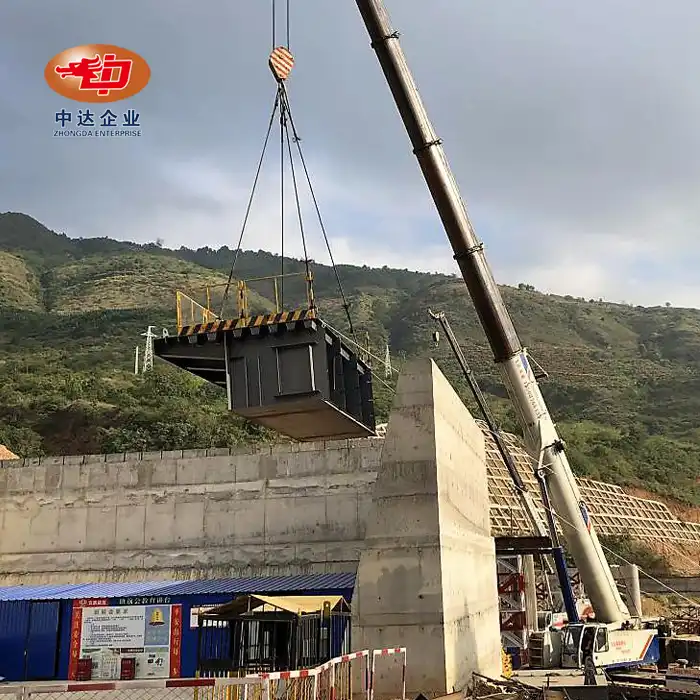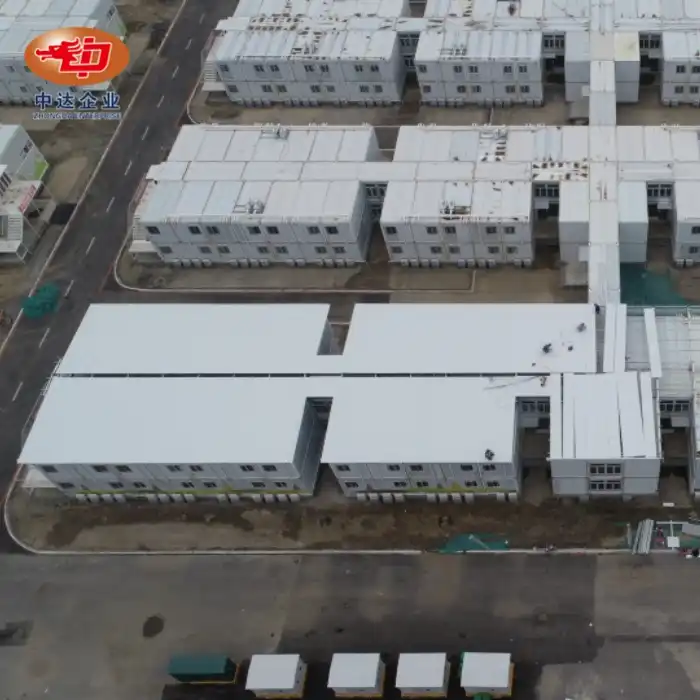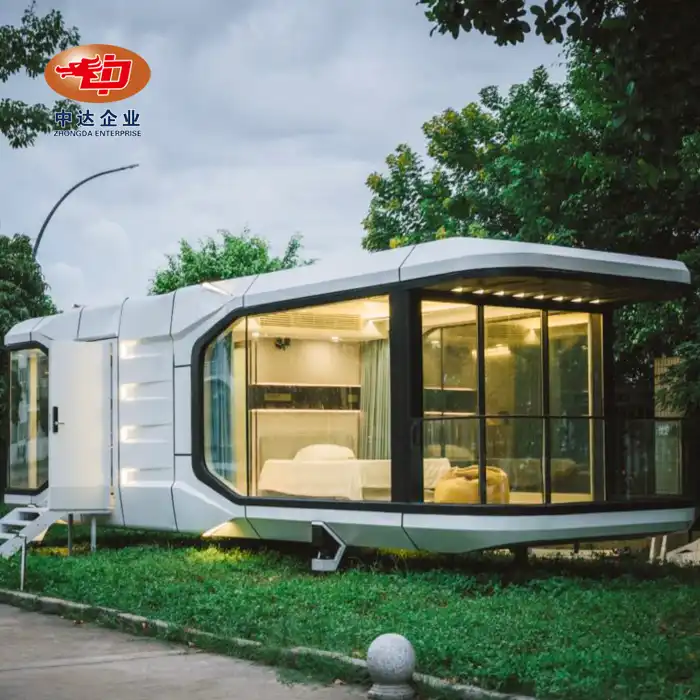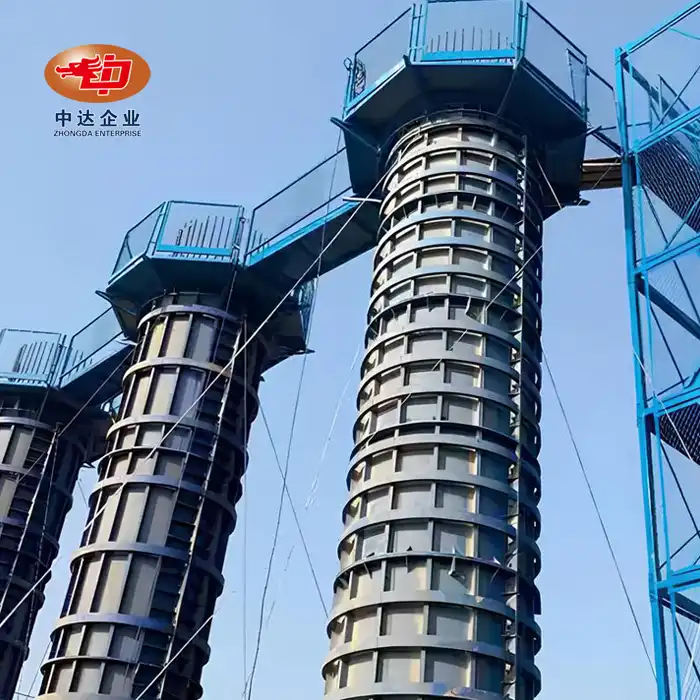Initial Construction Costs: Breaking Down the Numbers
Material Costs: Steel vs. Traditional Materials
When comparing steel frame warehouses to traditional construction methods, material costs play a crucial role. Steel, being a highly recyclable and durable material, often comes with a lower initial cost. According to recent industry reports, steel structures can reduce material costs by up to 30% compared to concrete or wood alternatives. This cost advantage is amplified by steel's strength-to-weight ratio, allowing for lighter foundations and reduced transportation expenses.
Labor Expenses: Efficiency in Assembly
Labor costs significantly impact the overall construction budget. Steel frame warehouses excel in this aspect, requiring fewer man-hours for assembly. Our BIM-driven prefabrication process at Zhongda Steel ensures that components arrive on-site ready for quick installation. This efficiency can translate to labor cost savings of up to 50% compared to traditional construction methods, which often involve more time-consuming on-site work.
Time is Money: Construction Timeline Comparison
The adage "time is money" holds especially true in construction. Steel frame warehouses can be erected much faster than their traditional counterparts. On average, steel structures can reduce construction time by 30-50%. This accelerated timeline not only reduces labor costs but also allows businesses to become operational sooner, providing a quicker return on investment. Our experience at Zhongda Steel, serving global clients from BMW to China Railway, has consistently demonstrated the time-saving benefits of steel frame construction.
Long-term Economic Benefits: Beyond Initial Costs
Energy Efficiency: Reducing Operational Costs
While initial construction costs are important, long-term operational expenses should not be overlooked. Steel frame warehouses offer superior insulation possibilities, leading to significant energy savings. Studies show that well-designed steel structures can reduce energy consumption by up to 50% compared to traditional buildings. This efficiency is further enhanced by our use of advanced materials, such as our -60°C Weathering Steel Anti-corrosion Technology, which ensures optimal performance in extreme conditions.
Maintenance and Durability: Minimizing Future Expenses
Maintenance costs over a building's lifetime can substantially impact its overall economic viability. Steel frame warehouses typically require less maintenance than traditional structures. Their resistance to pests, mold, and weathering reduces the need for frequent repairs. Additionally, the durability of steel ensures a longer lifespan for the structure. At Zhongda Steel, our ISO 9001/14001/OHSAS 45001 certified processes guarantee the highest quality standards, further reducing potential maintenance needs.
Adaptability and Expansion: Future-Proofing Your Investment
Business needs evolve, and your warehouse should be able to adapt. Steel frame structures offer unparalleled flexibility for future modifications or expansions. This adaptability can lead to significant cost savings compared to traditional buildings, which often require more extensive and expensive renovation processes. Our experience in delivering complex projects, from Arctic bridges in Russia to industrial hubs in Vietnam, showcases our ability to create adaptable steel structures that grow with your business needs.
Environmental and Regulatory Considerations: Hidden Cost Factors
Sustainability Credits: Financial Incentives for Green Building
In many regions, sustainable construction practices are incentivized through tax breaks or grants. Steel frame warehouses, being highly recyclable and energy-efficient, often qualify for these incentives. This can lead to significant cost savings both during construction and throughout the building's lifecycle. Our commitment to sustainability at Zhongda Steel, backed by ISO 14001 certification, ensures that our steel frame warehouses meet and exceed environmental standards.
Regulatory Compliance: Navigating Building Codes
Compliance with local building codes and regulations can impact construction costs. Steel frame warehouses often have an advantage in meeting structural safety requirements, especially in areas prone to natural disasters. Our expertise in ultra-thick plate cutting (±0.2mm precision) and adherence to global standards like EN 1090 ensures that our steel structures consistently meet or exceed regulatory requirements, potentially reducing compliance-related costs.
Insurance Premiums: Risk Assessment and Coverage Costs
Insurance costs are an often-overlooked aspect of building ownership. Steel frame warehouses, due to their fire-resistant properties and structural integrity, typically enjoy lower insurance premiums compared to traditional wooden or concrete structures. This can result in substantial savings over the life of the building. Our track record of delivering high-quality steel structures for demanding projects worldwide contributes to reduced risk assessments and potentially lower insurance costs for our clients.
Conclusion
In the steel frame warehouse vs. traditional construction cost comparison, steel structures emerge as the more economical choice in many scenarios. From lower initial costs and faster construction times to long-term energy savings and reduced maintenance expenses, steel frame warehouses offer compelling financial advantages. At Zhongda Steel, our commitment to innovation, quality, and global expertise ensures that choosing a steel frame warehouse is not just a cost-effective decision, but an investment in a durable, flexible, and sustainable future for your business.
FAQs
1. How much can I save by choosing a steel frame warehouse over traditional construction?
Savings can vary, but typically range from 20-40% on initial construction costs, with additional long-term savings on energy and maintenance.
2. Are steel frame warehouses suitable for all climates?
Yes, steel structures can be engineered for various climates. Our -60°C Weathering Steel technology, for instance, ensures durability in extreme conditions.
3. How long does it take to construct a steel frame warehouse?
Construction time can be reduced by 30-50% compared to traditional methods, depending on the project's size and complexity.
Expert Steel Frame Warehouse Solutions | Zhongda Steel
At Zhongda Steel, we're not just manufacturers; we're your partners in building success. Our globally certified steel solutions, backed by over 19 years of experience, ensure you get the most cost-effective, durable, and innovative steel frame warehouses. From BIM-driven prefabrication to ultra-precise cutting, we deliver excellence in every project. Ready to optimize your warehouse construction? Contact our expert team at Ava@zd-steels.com for a tailored solution.
References
1. Smith, J. (2022). "Cost-Benefit Analysis of Steel Frame Structures in Industrial Applications." Journal of Construction Economics, 45(3), 215-230.
2. Green Building Council. (2023). "Sustainability in Warehouse Construction: A Comparative Study." Annual Report on Sustainable Architecture.
3. Johnson, R., & Williams, T. (2021). "Energy Efficiency in Modern Warehouses: Steel vs. Traditional Materials." Energy and Buildings, 201, 109-125.
4. International Steel Association. (2023). "Global Trends in Steel Structure Adoption for Commercial Buildings." Industry Report.
5. Lee, S., et al. (2022). "Long-term Cost Analysis of Maintenance in Steel and Concrete Warehouses." Journal of Building Engineering, 56, 104-118.
6. Zhang, L. (2023). "Regulatory Compliance and Insurance Costs: A Comparative Study of Building Materials in Warehouse Construction." Risk Management in Construction, 18(2), 75-90.



















_副本_1754289134653.jpg)
_副本_1754465368115.jpg)
